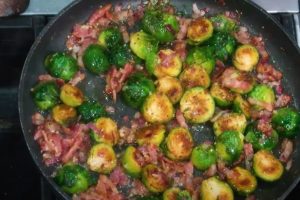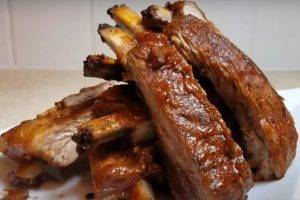Introduction to Baking Potatoes
Baking potatoes is a classic, versatile, and delicious way to prepare this popular vegetable. Whether you enjoy them loaded with toppings, as a side dish, or as the star of a meal, baked potatoes are a comfort food that’s both satisfying and nutritious. This comprehensive guide will cover everything you need to know about baking potatoes, including factors affecting baking time, various methods, and tips for achieving the perfect result every time.
Factors Affecting Baking Time
Potato Size and Type
The size and type of potato can have a significant impact on the baking time. Large potatoes, such as russets or baking potatoes, will take longer to cook than smaller potatoes like fingerlings or new potatoes. Additionally, the type of potato can influence the cooking time. Starchy potatoes like russets and Idaho potatoes are ideal for baking because they have a high starch content and a fluffy texture when cooked. Waxy potatoes like red and Yukon gold potatoes have a lower starch content and may take slightly longer to bake due to their denser texture.
Oven Temperature
Oven temperature is another factor that affects the baking time of potatoes. Generally, potatoes are baked at a temperature between 375°F (190°C) and 425°F (220°C). Baking at a higher temperature will result in a shorter cooking time, while a lower temperature will require a longer baking time. It’s essential to preheat your oven before placing the potatoes inside, as this ensures even cooking and helps to achieve a crispy skin and tender interior.
Preparation Techniques
The way you prepare your potatoes before baking can also impact the cooking time. Washing and thoroughly drying potatoes before baking is important to remove dirt and prevent soggy skin. Piercing the potatoes several times with a fork allows steam to escape during baking, reducing the risk of the potatoes bursting and promoting even cooking. Wrapping potatoes in aluminum foil can help retain moisture and result in a softer skin, but this method may require a slightly longer baking time compared to unwrapped potatoes. Additionally, coating the potatoes with oil and seasoning with salt and pepper will enhance their flavor and contribute to a crispier skin.
Stay tuned for more information on various methods for baking potatoes, tips for achieving perfectly baked potatoes, and delicious recipes to try at home.
Methods for Baking Potatoes
Conventional Oven Baking


Microwave Baking


Grill Baking


Tips for Perfectly Baked Potatoes
Piercing and Wrapping
Piercing potatoes with a fork before baking is essential to prevent them from bursting in the oven, as it allows steam to escape during cooking. Make several shallow punctures evenly spaced around each potato to ensure they cook evenly. Wrapping potatoes in aluminum foil is optional but can help retain moisture and result in a softer skin. Keep in mind that wrapping the potatoes in foil may require a slightly longer baking time compared to unwrapped potatoes.
Seasoning and Toppings
Seasoning potatoes before baking enhances their flavor and contributes to a crispier skin. Lightly coat the potatoes with oil, then sprinkle with salt and pepper. You can also experiment with other seasonings such as garlic powder, onion powder, or paprika. When it comes to toppings, the possibilities are endless. Classic toppings include butter, sour cream, chives, bacon bits, and cheese. For a more creative twist, try adding chili, sautéed mushrooms, salsa, or pulled pork.
Checking for Doneness
To ensure your baked potatoes are cooked to perfection, check for doneness by inserting a fork or knife into the center of the potato. If it goes in easily without resistance, the potatoes are done. Another way to check for doneness is by giving the potatoes a gentle squeeze. If they feel soft and yield to pressure, they are ready to be served. Keep in mind that cooking times may vary depending on the size and type of potato, as well as the cooking method used. Always use a timer and check for doneness periodically to avoid overcooking or undercooking your potatoes.
Delicious Baked Potato Recipes
Loaded Baked Potatoes


Twice-Baked Potatoes
Twice-baked potatoes are a flavorful and elegant spin on the classic baked potato. To make them, first bake your potatoes using the conventional oven method. Once cooked, cut the potatoes in half lengthwise and scoop out the flesh, leaving a thin layer in the skin. Mix the potato flesh with butter, milk or cream, salt, pepper, and your choice of seasonings or mix-ins, such as garlic, sautéed onions, or fresh herbs. Spoon the mixture back into the potato skins, and top with shredded cheese. Return the potatoes to the oven and bake for an additional 15-20 minutes or until the cheese is melted and the tops are golden brown.
Hasselback Potatoes


Conclusion: Mastering the Art of Baking Potatoes
In conclusion, baking potatoes is a versatile and straightforward cooking method that can result in many delicious dishes. By understanding the factors that affect baking time, such as potato size, type, and oven temperature, you can achieve perfectly cooked potatoes every time. Experiment with different cooking methods, such as conventional oven baking, microwave baking, or grill baking, to find your preferred technique.
Always remember to pierce potatoes before baking to prevent them from bursting, and season them well to enhance their flavor. Check for doneness using a fork or by gently squeezing the potatoes to ensure they are cooked to perfection. Finally, get creative with your baked potato recipes, and don’t be afraid to try new toppings and variations. From loaded baked potatoes to Hasselback potatoes, there’s a baked potato dish for every taste and occasion. Happy cooking!








